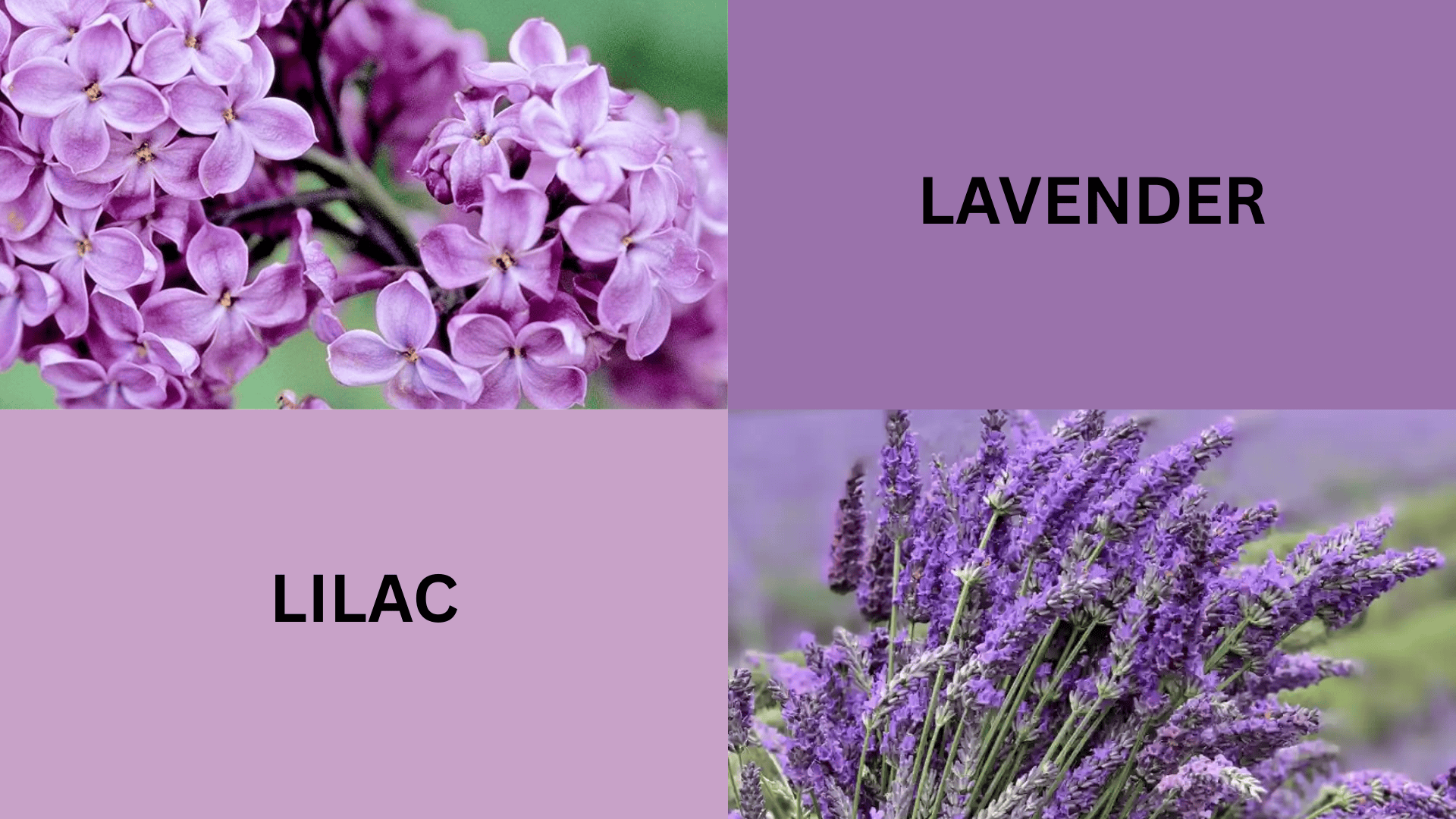When you think of soft purples, two colors likely come to mind: lilac and lavender. Beautiful blooms inspire both, and while they may look similar at first glance, they’re quite different in tone, mood, and use.
Lilac leans warm with its pink undertones, while lavender stays cool with a hint of blue.
These shades do more than look pretty; they influence how a space feels and even how relaxed or energized you might become around them.
From wedding palettes to bedroom walls, these gentle purples show up in fashion, decor, and design choices everywhere.
Understanding the lavender vs lilac differences becomes essential when choosing between these popular hues.
But which one suits your vibe better? If you’re drawn to the sweetness of lilac or the serenity of lavender, this will break it all down, from color codes and plant details to fragrance, growth habits, and everyday uses.
Color Meaning: Lilac vs Lavender Color
Colors inspired by flowers can appear quite different from one another, even when they all seem to be purple.
Color theory shows that even small changes in hue, saturation, or brightness completely transform how we respond to a shade.
Understanding these scientific principles helps explain why lilac feels warm and romantic while lavender feels cool and calming.
The subtle differences in undertones completely change how these colors feel and work in design. Let’s break down four popular purple-family colors to see what makes each one special.
Lilac Color
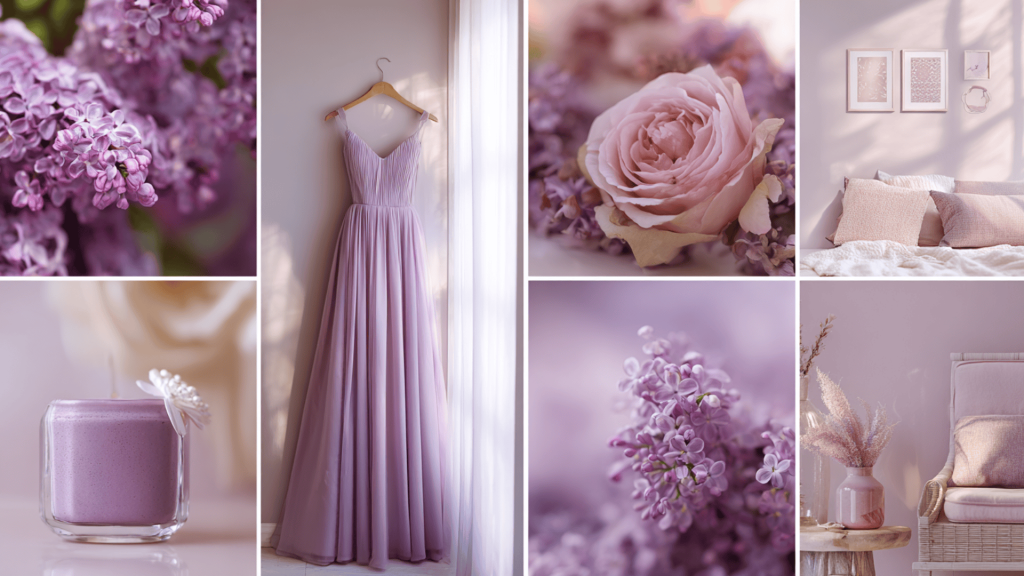
Lilac is a light purple with pink undertones. This combination creates a warm, gentle shade that feels soft and inviting.
The color gets its name from the common lilac flower, which typically shows this rosy-purple hue.
Color details:
- Hex code: #C8A2C8
- RGB values: 200, 162, 200
- Pink undertones make it feel warmer
- Medium lightness with moderate saturation
This color works well for:
- Spring wedding decorations
- Children’s bedrooms and nurseries
- Feminine clothing and accessories
- Romantic interior design themes
- Vintage-style decorations
Lavender Color
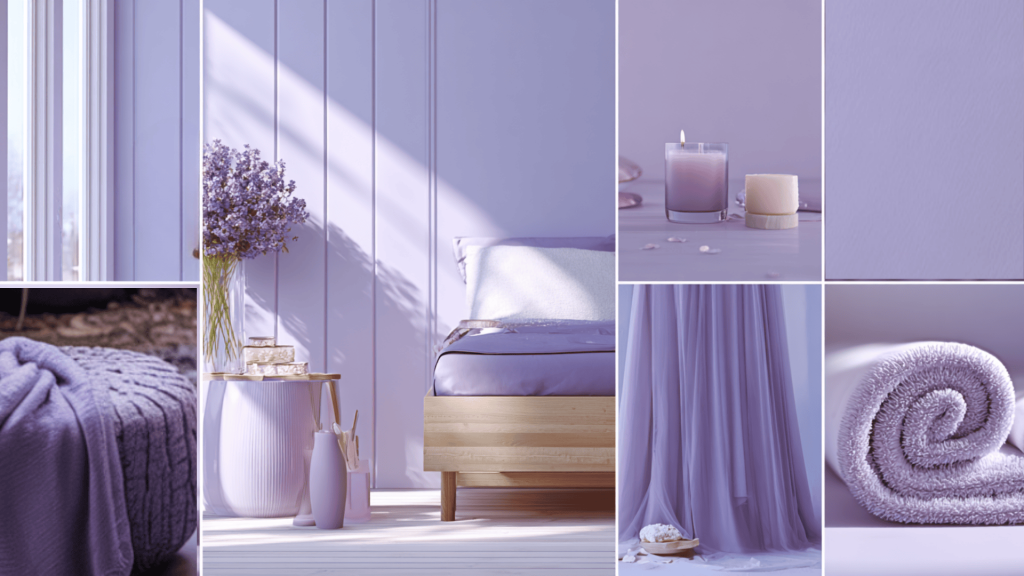
Lavender color is light purple with blue undertones, creating a cooler, more serene appearance. This shade often looks more muted and peaceful than pink-tinted purples.
It gets its calming quality from those blue undertones.
Color details:
- Hex code: #E6E6FA
- RGB values: 230, 230, 250
- Blue undertones create coolness
- Very light with low saturation
This color fits well in:
- Bedrooms for peaceful sleep
- Spa and wellness centers
- Modern minimalist home designs
- Professional office spaces
- Meditation and yoga rooms
Color Psychology and Cultural Meanings
Each purple shade carries its own psychological effects and cultural history. Understanding these deeper meanings helps explain why certain colors feel right in specific situations.
Lilac’s gentle power comes from combining purple’s wisdom with pink’s nurturing qualities. This makes lilac feel approachable yet meaningful. Psychology studies show that lilac reduces stress while still feeling sophisticated.
Lavender’s calming nature stems from its blue undertones, which naturally lower heart rate and blood pressure. This explains why lavender appears so often in bedrooms and meditation spaces.
Quick Comparison: Lilac vs Lavender vs Purple vs Periwinkle
This will help you understand the key features of these popular flowering plants and their color variations.
| FEATURE | LILAC | LAVENDER | PURPLE | PERIWINKLE |
|---|---|---|---|---|
| Base tone | Light purple + pink | Light purple + blue | Pure purple | Light blue + purple |
| Temperature | Warm | Cool | Neutral | Cool |
| Saturation | Medium | Low | High | Medium |
| Lightness | Medium-light | Very light | Medium-dark | Very light |
| Best season | Spring | Summer | Fall/Winter | Spring/Summer |
| Mood | Romantic, soft | Calm, peaceful | Bold, regal | Fresh, youthful |
| Hex code | #C8A2C8 | #E6E6FA | #800080 | #CCCCFF |
Lilac vs Lavender: Botanical Profiles & Plant Families
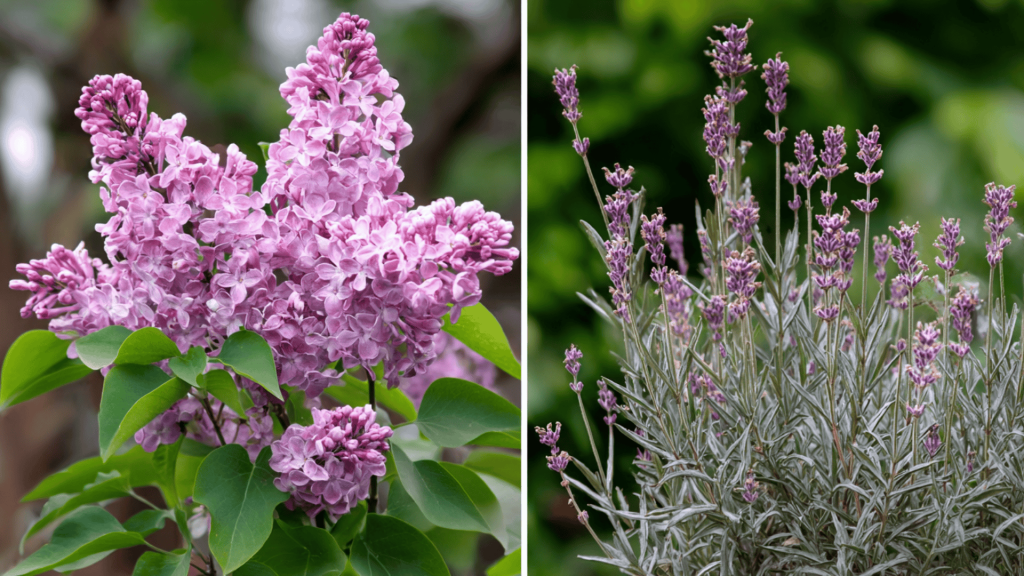
Before we compare these plants directly, it helps to understand what each one is. Lilac and lavender come from completely different plant families and have very different backgrounds.
This explains why they grow so differently and have such different needs.
Lilac
The common lilac (Syringa vulgaris) belongs to the olive plant family. These plants first grew in Eastern Europe and Asia. Lilacs can grow up to 20 feet tall and live for many years.
Lilac flowers grow in large clusters that resemble cones. Each tiny flower has four petals. The flowers can be purple, pink, white, or blue. They bloom in late spring and have a very sweet scent.
The leaves are heart-shaped and dark green. They grow up to 4 inches long and have smooth edges. In the fall, the leaves turn yellow before they drop off.
Lavender
English lavender (Lavandula angustifolia) comes from the mint family. This plant first grew around the Mediterranean Sea. Lavender grows as a small shrub, usually 1 to 3 feet tall.
Lavender flowers are small and tube-shaped. They grow in tall spikes at the end of long stems. The flowers are usually purple but can also be white or pink. This plant blooms from summer through fall.
The leaves are narrow and look like needles. They are 1 to 2 inches long and have a gray-silver color. Fine hairs cover the leaves, giving them a fuzzy feel. The leaves smell good when you touch them.
Spotting the Visual Differences
Once you know what to look for, distinguishing between lilac and lavender becomes easy. The plants have completely different shapes, sizes, and flower styles.
Understanding these visual clues helps you identify them quickly, even from a distance.
Flower Shapes and Growth
Lilac flowers grow in dense, pyramid-shaped bunches called panicles. Each flower cluster can be 4 to 8 inches long. The flowers completely cover the shrub during bloom time in spring. The blooming period lasts about 2 to 3 weeks.
Lavender flowers grow in neat rows along tall, thin spikes. Each spike can be 2 to 4 inches long. The flowers keep blooming from early summer until the first frost. This gives you color for months instead of weeks.
Leaves and Overall Size
Lilac plants can grow 6 to 20 feet tall and 5 to 15 feet wide. They form an upright, vase-like shape. The plant is deciduous, which means it loses all its leaves in winter.
Lavender plants stay small at 1 to 3 feet tall and 2 to 4 feet wide. They grow in a rounded, mounding shape. In mild areas, lavender keeps its leaves all year long.
Stem
Lilac stem structure: Woody stems contain vessels called xylem that transport water up to 20 feet. The cambium layer enables stems to grow thicker each year, resulting in the characteristic bark texture.
Lavender stem structure: Semi-woody stems have fewer xylem vessels but more essential oil storage cells. These stems stay smaller but live longer than typical herbs.
Fragrance Showdown: Lilac’s Sweetness vs Lavender’s Calm
When it comes to floral scents, lilac and lavender often steal the spotlight, but for very different reasons. Let’s take a closer look at what sets their scents apart.
Lilac Aroma
Lilac flowers produce a powerful, sweet fragrance that fills the air around the plant. The scent combines floral notes with hints of vanilla and spice. This intense perfume attracts pollinators and creates a memorable garden experience.
The strong fragrance works well in cut flower arrangements but fades quickly once picked. Lilac scent is difficult to capture in essential oils, making it less common in commercial products.
Lavender Scent
Lavender offers a clean, herbal fragrance with floral undertones. The scent is calming and fresh, often described as relaxing and therapeutic. Both flowers and leaves contribute to the plant’s aromatic qualities.
This fragrance lasts well when dried and concentrates effectively in essential oils. The lasting scent makes lavender popular for sachets, potpourri, and aromatherapy products.
Growing Needs: Soil, Sun, and Watering Tips
Lilac and lavender may both be beautiful, but they thrive in very different environments. Here’s what each one needs to do to grow strong and healthy.
Lilac
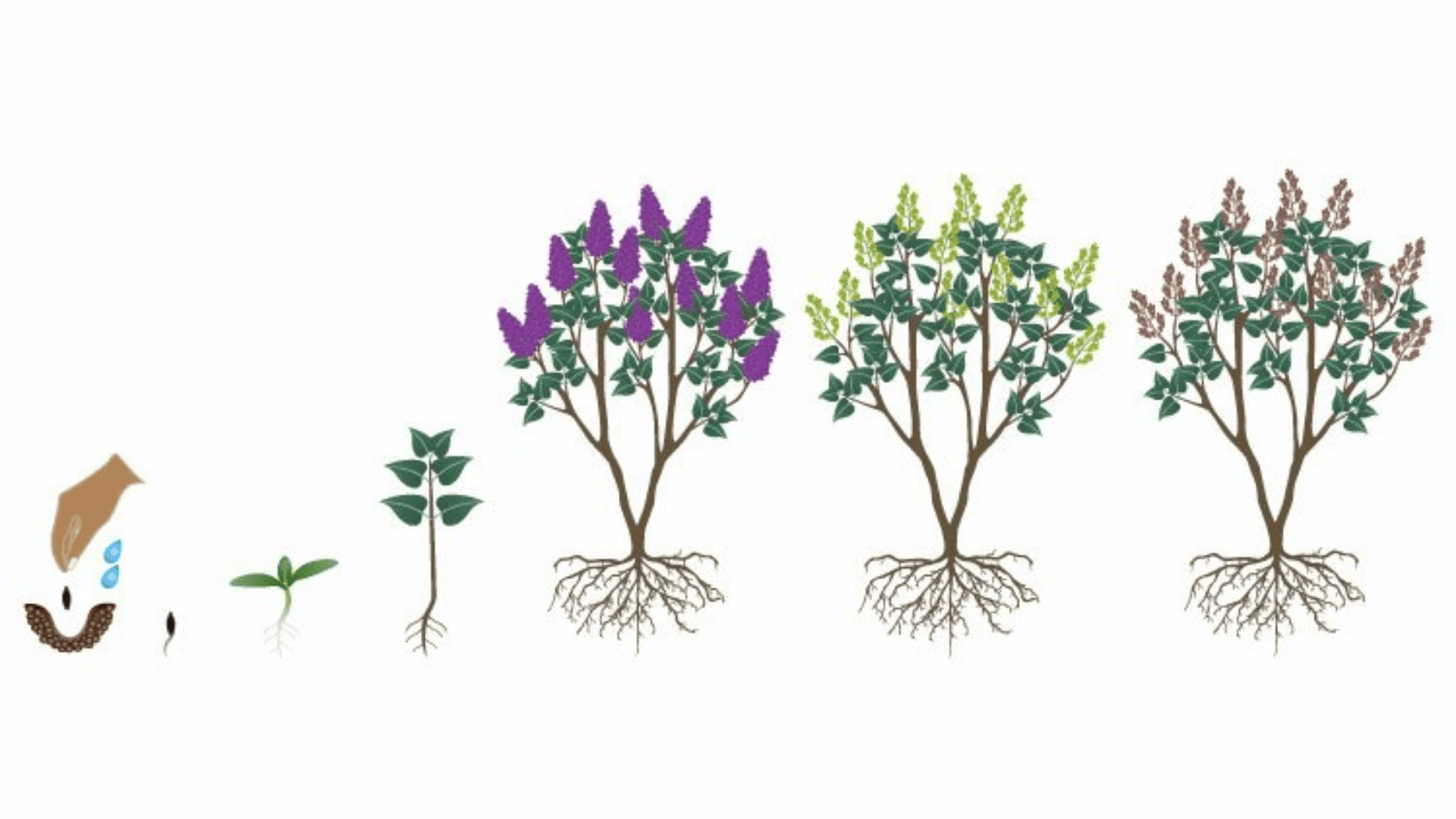
Lilacs need cool weather to grow well. They work best in USDA zones 3 through 7. These plants need cold winters to bloom properly the next spring.
Soil needs: Well-draining soil that’s slightly alkaline (pH 6.5-7.0)
Sun needs: Full sun for at least 6 hours per day
Water needs: Regular water, but not too much
Care tips: Remove old flowers after blooming and thin out crowded branches.
Lilacs don’t grow well in warm areas because they need winter cold to set flower buds.
Lavender
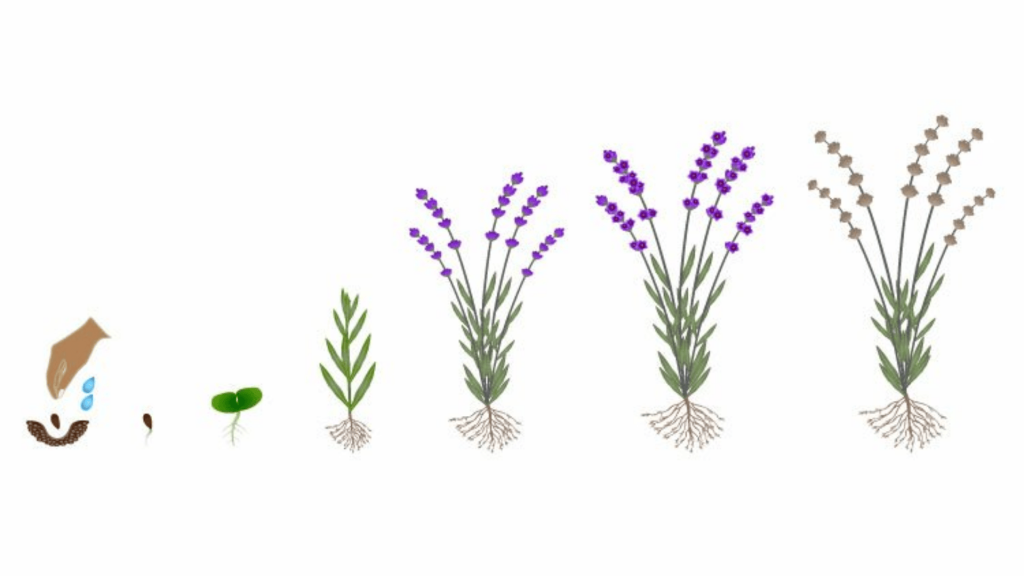
Lavender prefers hot, dry conditions similar to those found in Mediterranean areas. It grows well in USDA zones 5 through 9.
Soil needs: Sandy, well-draining soil that’s alkaline
Sun needs: Full sun all day
Water needs: Very little water once established
Care tips: Trim the plant after flowering to keep its shape
Lavender dislikes humidity and wet soil. Too much water can kill the roots.
How to Tell Lilac Apart from Lavender at a Glance
Lilac and lavender may share shades of purple, but their features are easily distinguishable once you know what to look for.
Use this quick chart to spot the differences fast.
| FEATURE | LILAC | LAVENDER |
|---|---|---|
| Plant Size | 6-20 feet tall, 5-15 feet wide | 1-3 feet tall, 2-4 feet wide |
| Plant Type | Deciduous shrub/small tree | Evergreen woody herb |
| Leaf Shape | Heart-shaped, 2-4 inches long | Narrow, needle-like, 1-2 inches |
| Leaf Pattern | Opposite arrangement | Whorled or opposite |
| Flower Shape | 4-petaled, in dense clusters | Tubular, in tall spikes |
| Flower Arrangement | Cone-shaped panicles | Linear spikes |
| Bloom Time | Mid to late spring (2-3 weeks) | Early summer to fall |
| Fragrance | Sweet, intense, vanilla-like | Herbal, clean, calming |
| Stem Type | Woody, thick branches | Thin, flexible stems |
| Winter Behavior | Loses all leaves | Keeps leaves in mild climates |
| Growth Habit | Upright, vase-shaped | Compact, mounding |
| Flower Colors | Purple, pink, white, blue | Purple, blue, white, pink |
| Bark | Gray-brown, smooth when young | Green to brown, thin |
Historical Significance of Lilac and Lavender
Both lilac and lavender have carried symbolic meanings for centuries, influencing fashion, rituals, and emotions.
Lilac became popular in 18th-century Europe, particularly during the Victorian era, where it symbolized the beginning of love and the renewal of spring.
It was often worn by widows transitioning out of mourning, making it a color of bittersweet sentiment.
In Eastern Europe, lilac shrubs were also planted near homes to bring good luck and ward off negative energy.
Lavender, on the other hand, has a longer legacy dating back to ancient Egypt, Greece, and Rome.
The Romans used lavender oil in their baths, believing it purified both the body and the spirit. In medieval times, it symbolized cleanliness, calm, and devotion.
Lavender was also a staple in English and French apothecaries, used in love spells and to scent linens.
These rich cultural roots continue to shape how we see and use both colors today.
How Lilac and Lavender Upgrade Homes, Gardens, and Wellness
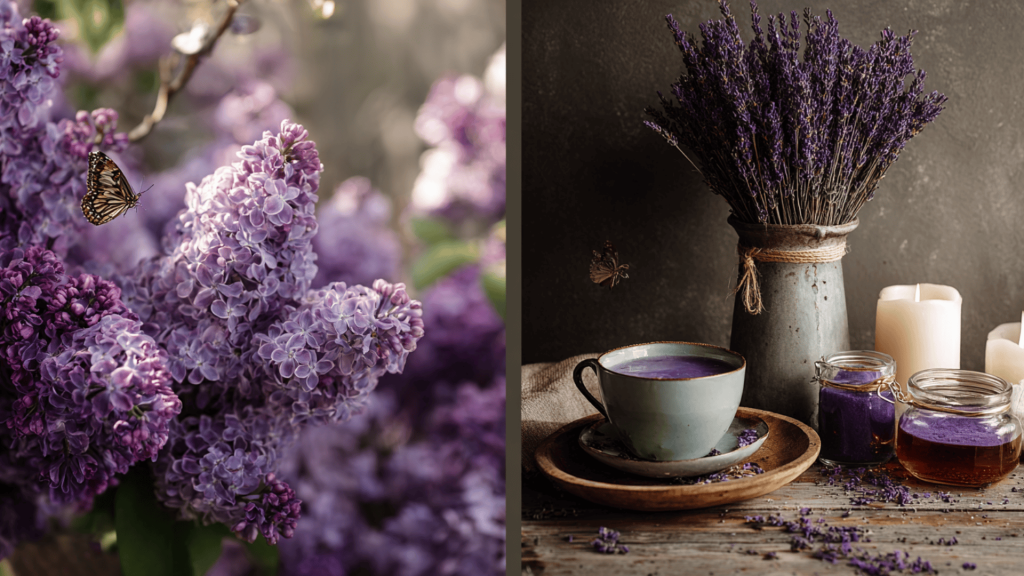
Lilac and lavender aren’t just pretty; they’re beneficial, too. From garden design to home remedies, each offers unique benefits.
Lilac Applications
- Garden Structure & Privacy: Lilacs grow tall and dense, making them ideal for privacy screens or hedgerows along borders. They also work well as eye-catching focal points in spring gardens.
- Wildlife Attraction: Their fragrant blooms attract butterflies, bees, and birds, offering both food and shelter. This makes lilacs a valuable plant for supporting backyard ecosystems.
- Indoor & Decorative Use: Fresh lilac branches add beauty and scent to indoor arrangements. Dried flowers are perfect for wreaths, crafts, and long-lasting home décor.
Lavender Applications
-
Wellness & Relaxation: Lavender oil is often diffused to ease stress or added to bath salts and pillow sachets for restful sleep. Its soothing scent promotes calm in everyday routines.
-
Culinary & Herbal Uses: Lavender flavors honey, desserts, and teas with a mild floral note. It’s a favorite in herbal blends for calming drinks and treats.
-
Practical & Household Benefits: Lavender oil can treat minor burns and be used in DIY cleaners. Dried buds also repel moths and bugs naturally in drawers and closets.
Which Should You Choose for Your Garden?
Consider these factors when selecting between lilac and lavender:
| CHOOSE LILAC | CHOOSE LAVENDER |
|---|---|
| A dramatic burst of color in mid-to-late spring | Continuous blooms from early summer through fall |
| A large, upright shrub or small ornamental tree | A compact, low-growing plant that’s easy to manage |
| A sweet, floral scent in the garden | A calming herbal aroma for oils and sachets |
| A statement plant with traditional garden appeal | A versatile herb for cooking, skincare, and wellness |
| To attract butterflies, bees, and birds | To create natural insect repellents and bath products |
Wrapping It Up
Lilac and lavender may share a purple palette, but they serve very different roles in the garden and home.
Lilacs bring height, bold spring beauty, and a sweet floral aroma, while lavender offers a compact shape, calming scent, and multiple practical uses.
Your choice depends on your climate, space, and if you prefer ornamental charm or herbal charm. No matter which you choose, both plants add timeless appeal and natural fragrance to any setting.
Which one’s your favorite: lilac or lavender?
Drop a comment below and tell us what you’d plant in your garden!

